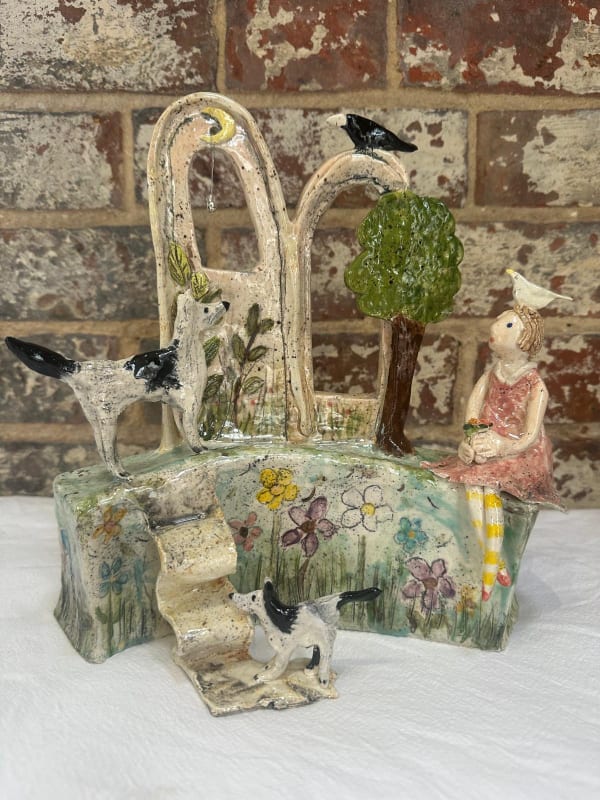Each new piece is different (obviously). I sometimes know vaguely what I wish to create and sometimes not, and with clay, you do have to be pretty relaxed. It is a bit naughty and often seems to have a mind of its own...
– Amelia Tuttiett, 2025
EASTWOOD FINE ART: How did you start your career as an artist?
AMELIA TUTTIETT: As a child, I was always told I had a vivid imagination, and I don’t believe it was meant as a compliment. I was constantly making up stories about animals and birds, being a lonely sort of a child. This is not to be pitied, I loved being on my own with my dog. It gave rise to a lot of stuff that went on and still does in my head, and it is second nature to imagine the lives of the creatures I develop in my pieces.
I don’t think there was any real starting point to my career. I had enormous encouragement from two of my closest friends in the early days and a lot of help with childcare, as well as wanting to buy work! It was a massive boost to my confidence and made me want to go on and complete a degree in Fine Art, which I did when I was 38. I had failed my A levels and gone straight into work, so I had always felt as if I had ‘sold myself short’, if you know what I mean. Passing a degree, I thought, would help me feel validated in my choice of work. I lacked confidence and thought a degree would help. It was quite the reverse. However, I had learnt how to write a good essay and felt I knew how to apply for art spaces and residential courses, and such like. I applied to an Arts Council Funded initiative called Creative Collisions, for four of my pieces to be placed in The Guardian Angel Chapel at Winchester Cathedral. The criteria was an artistic response to The Higgs Boson discovery, which I hardly understood but nevertheless was accepted, and they are still there.
The degree also put me back in touch with clay and I began to work with it in preference to painting – although I do think my pieces do have a lot of painterly qualities. I love shape and pattern and colour woven together to create stories.
EFA: Your ceramics burst with narrative and each piece represents a window into a different dreamlike tale. Could you tell us about the significance of these stories to your work. And how do you begin each new piece?
AT: Each new piece is different (obviously). I sometimes know vaguely what I wish to create and sometimes not, and with clay, you do have to be pretty relaxed. It is a bit naughty and often seems to have a mind of its own.
With clay there are two distinctive parts to creating something. Firstly making it and secondly colouring it, and both are fraught (as Josie will agree) with all sorts of ‘trip’ hazards. Cracks appearing, glazes not turning out how they are supposed to and have done so previously. It can be pretty frustrating at times, but the joy of clay is its ability to lend itself to just about any idea you can come up with. A statue, a jug, a fire piece, you name it – you can make it in clay. It is joyous working with well, basically mud and heat and colour.
EFA: Alongside your own work, you also teach ceramics. Has teaching impacted your approach to making?
AT: Teaching is an important part of my life as it brings new people into my life, which I think is important as I otherwise spend hours alone in my studio listening to podcasts or books. I enjoy introducing people to the joy of clay and seeing how they develop. It really is a bug that bites you. I like to set a task to my classes and see how differently they respond.
EFA: Is there anything you cannot be without in your studio?
AT: I could not be without light, clay, glazes, my three favourite brushes and a black underglaze pencil. All are essential items to making me happy in my practice.
EFA: Are there any recent experiences that have given a new perspective to your day-to-day work?
AT: My husband and I are very committed to rewilding and are very much interested in this endeavour. We have recently bought 200 acres on the Isle of Wight and are planning, alongside Hampshire and Isle of Wight Wildlife Trust, to develop it as a rewilding nature reserve that will forever be an environmental haven to all creatures. My passion for wildlife is huge and has always been so, and I hope that my work brings joy and represents this passion.
EFA: For SPOTLIGHT, you are showing two new works. Tell us more about them!
Edna Dreaming Wistfully is one of my ‘tableau’ series. Edna has for a long time now believed that if you look at a crescent moon and make a wish it will most definitely come true. Unfortunately she has not read the small print that clearly states this only ever happens on a Wednesday when there is a ‘p’ in the month. I fear she may be getting chilly sitting there in that woodland bower by the ancient ruins. Crikey a bird has settled on her head, she has tarried for so long! Get up, Edna, and finish your dog walk. Enough dilly-dallying!
The second piece is entitled Mordecai, The Fox and Crows, based on the Aesop fable of the silly, vain crow surrendering his lump of cheese to the wily fox tricked by his vanity. These crows ,however, care very little for cheese. They prefer instead to race around my garden cawing and mocking at the Magpies, their arch-rivals. When they tire, they settle onto the handles of my pots and, in this instance, chat to a passing friendly fox, whose name is Mordecai.
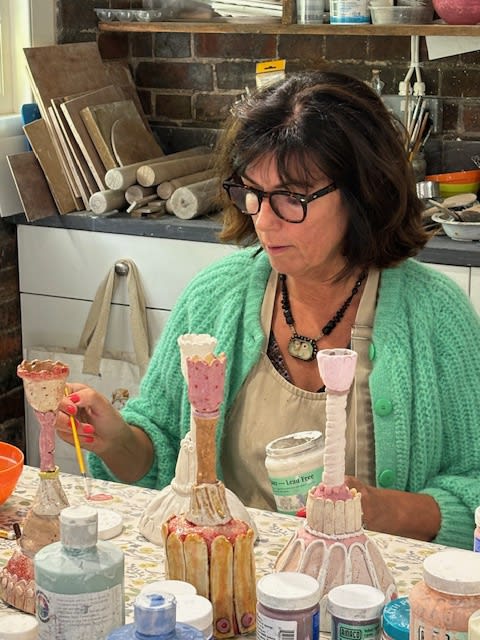
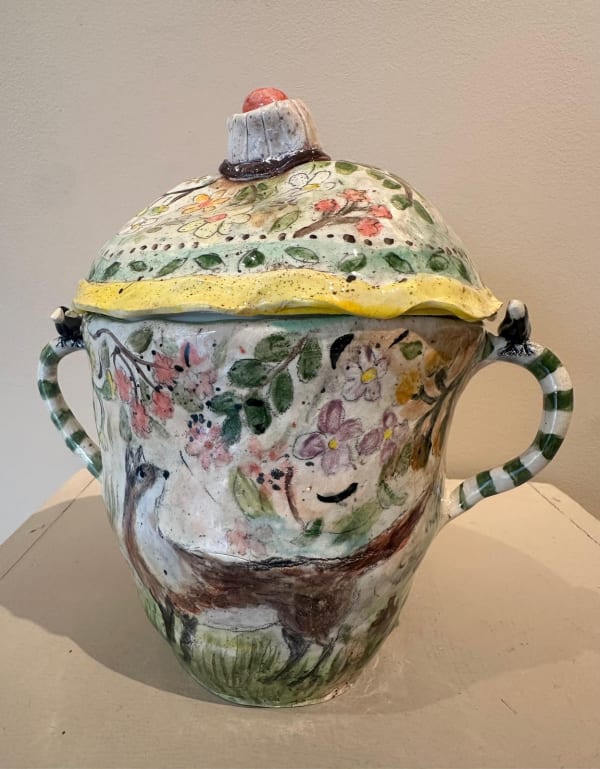
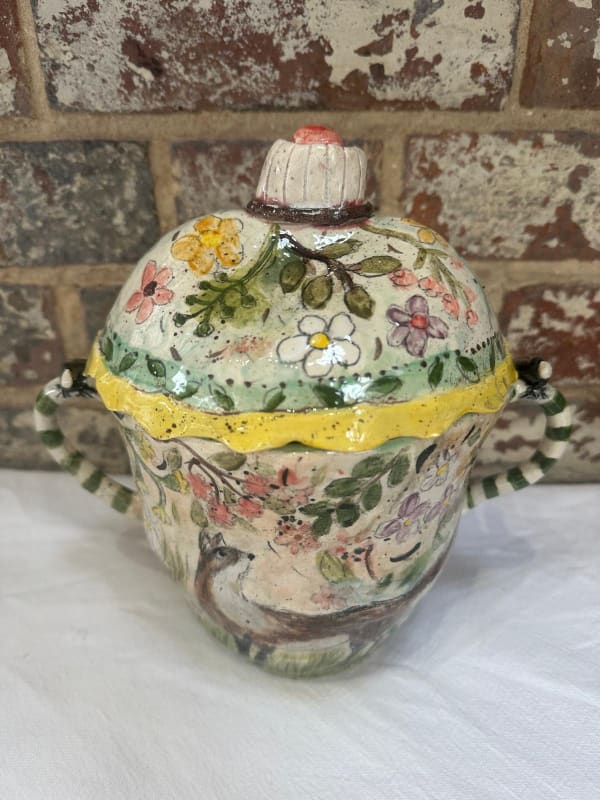
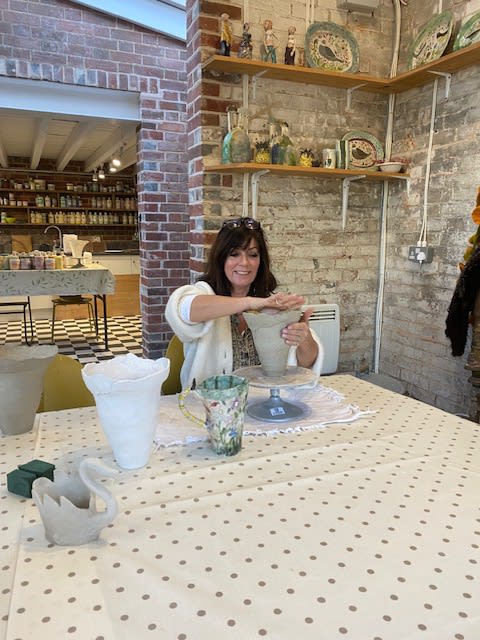
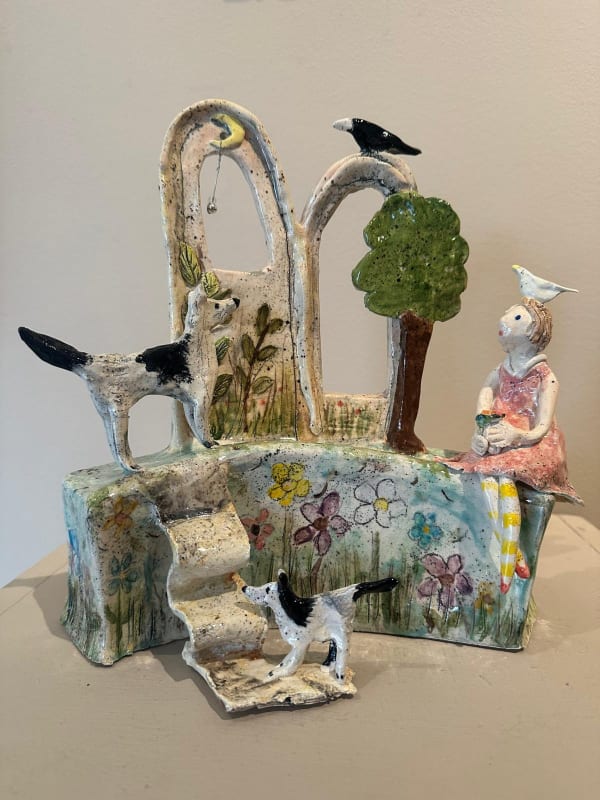
![Edna Dreaming Wistfully [detail] Ceramic 24 x 24 x 12 cms © The Artist](https://artlogic-res.cloudinary.com/w_600,c_limit,f_auto,fl_lossy,q_auto/ws-artlogicwebsite0172/usr/library/images/main/pages/53/img_4774.jpg)
